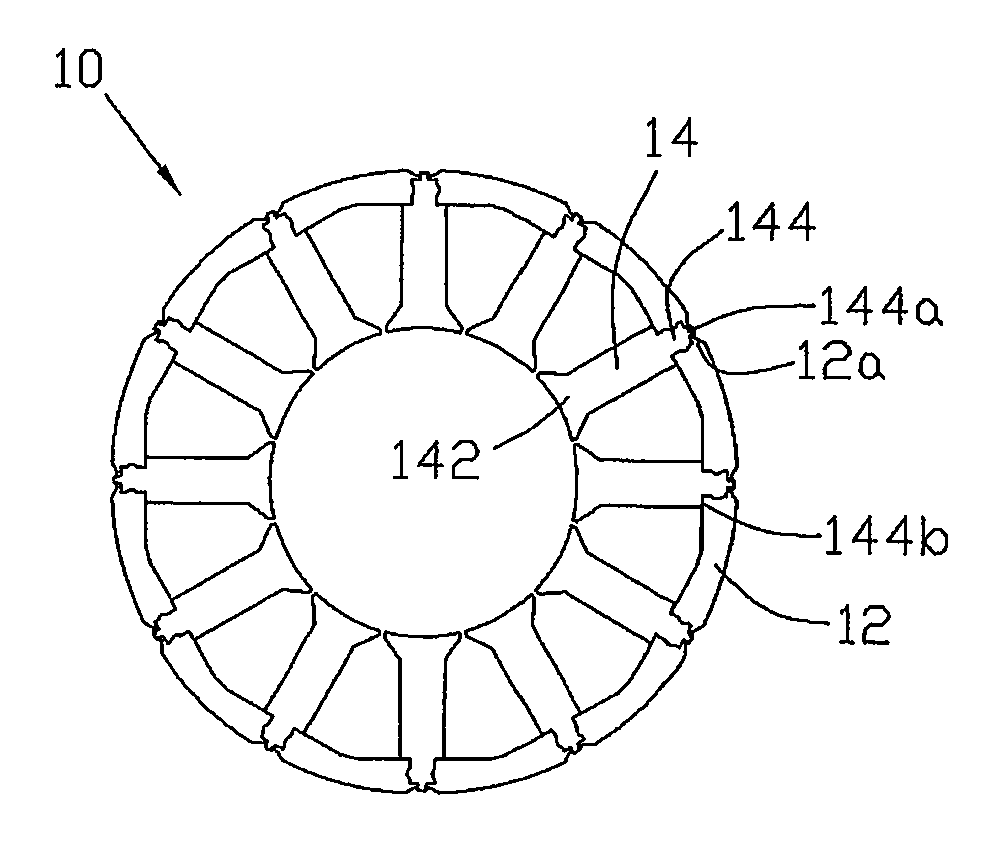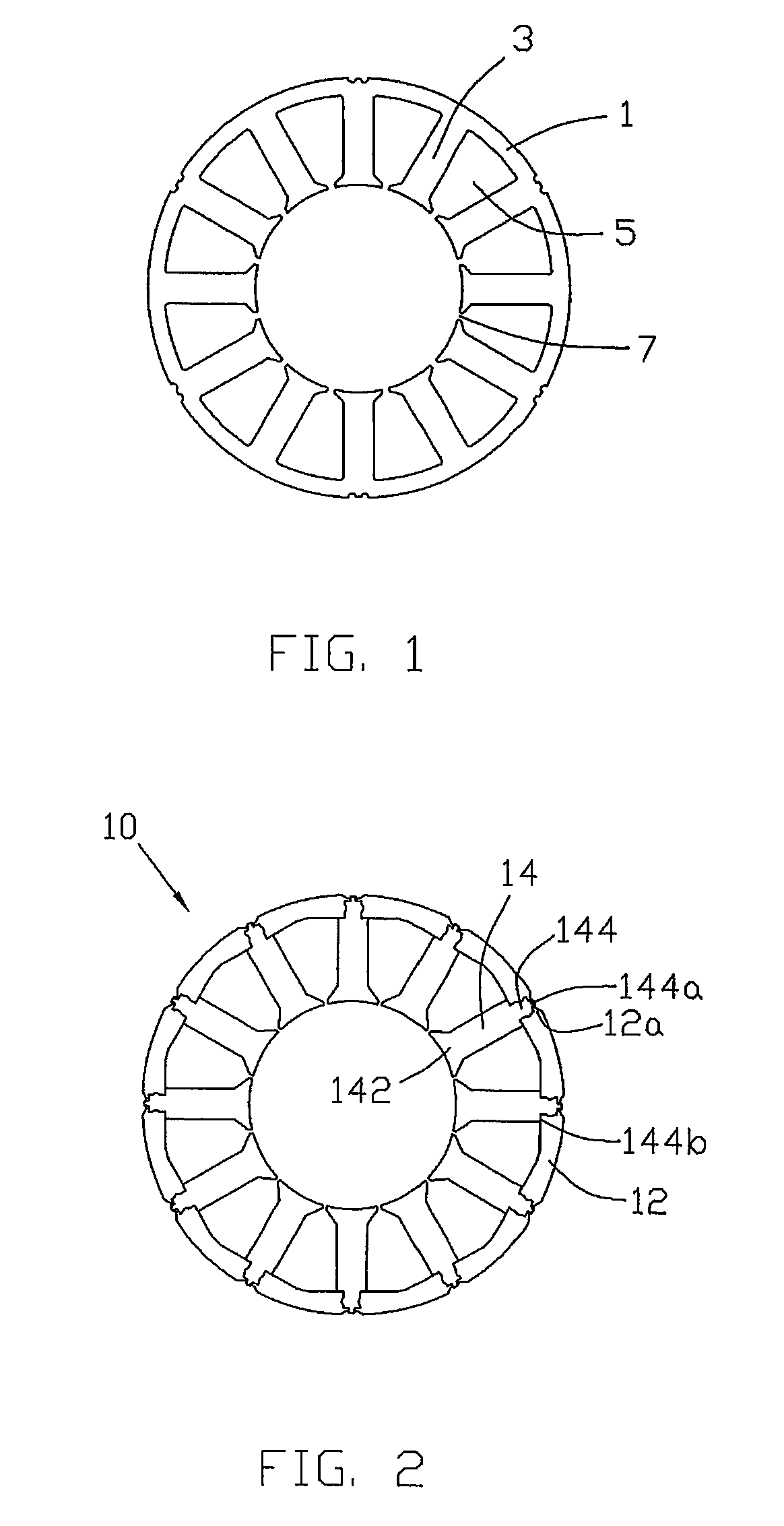Stator for an electric motor
a technology of electric motors and stators, applied in the field of electric motors, can solve the problems of inconvenient winding, low motor efficiency, and inconvenient winding methods, and achieve the effects of convenient winding, improved motor efficiency, and winding slot coils
- Summary
- Abstract
- Description
- Claims
- Application Information
AI Technical Summary
Benefits of technology
Problems solved by technology
Method used
Image
Examples
Embodiment Construction
[0025]FIG. 2 is a plan view of a stator core lamination for a servo motor. The stator core 10 is a laminated structure with each layer of the stator lamination comprising a plurality of teeth lamination 14 and a plurality of yoke laminations 12 which extend between adjacent teeth laminations 14. Each yoke 50 as shown in FIG. 3e is formed by stacking together a plurality of yoke laminations 12 and each tooth 40 as shown in FIG. 3b is formed by stacking together a plurality of tooth laminations 14. The yoke laminations 12 are elongate and extend in the circumferential direction of the stator core 10 to form a radially outer portion of the core. The teeth laminations 14 extend in the radial direction. The yokes 50 and teeth 40 are thus separately formed. When assembled the yokes support the teeth and also provide the magnetic flux path between the teeth. One yoke 50 extends between each pair of adjacent teeth 40 and one tooth 40 is located between each pair of adjacent yokes 50. Each t...
PUM
| Property | Measurement | Unit |
|---|---|---|
| cylindrical shape | aaaaa | aaaaa |
| angular speed | aaaaa | aaaaa |
| volume | aaaaa | aaaaa |
Abstract
Description
Claims
Application Information
 Login to View More
Login to View More - R&D
- Intellectual Property
- Life Sciences
- Materials
- Tech Scout
- Unparalleled Data Quality
- Higher Quality Content
- 60% Fewer Hallucinations
Browse by: Latest US Patents, China's latest patents, Technical Efficacy Thesaurus, Application Domain, Technology Topic, Popular Technical Reports.
© 2025 PatSnap. All rights reserved.Legal|Privacy policy|Modern Slavery Act Transparency Statement|Sitemap|About US| Contact US: help@patsnap.com



